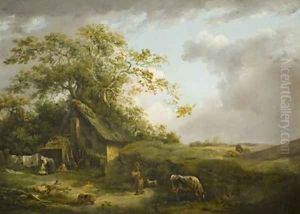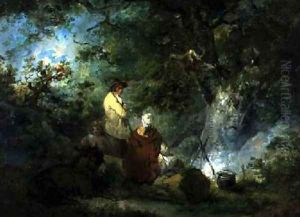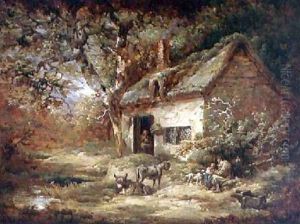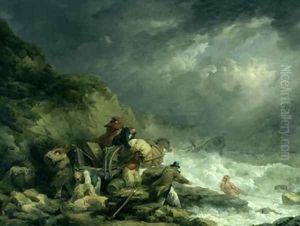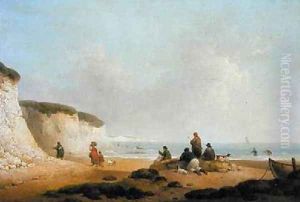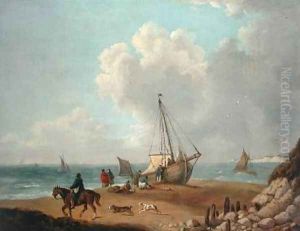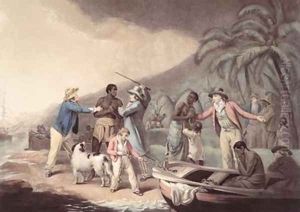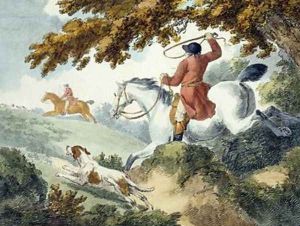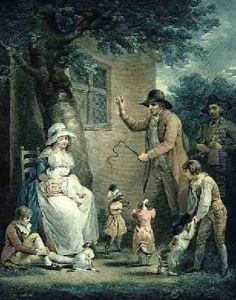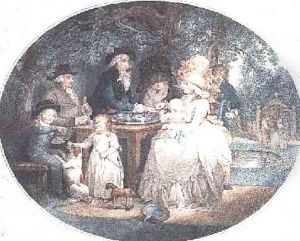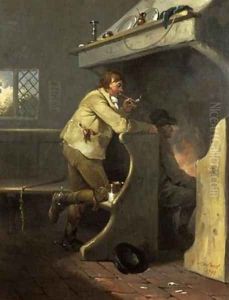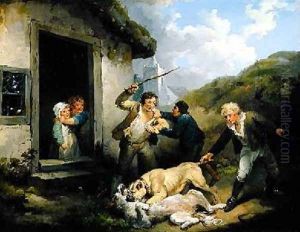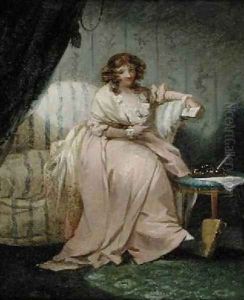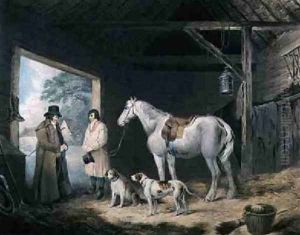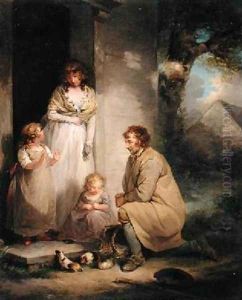George Morland Paintings
George Morland was an English painter of animals and rustic scenes, who was born in London on June 26, 1763. He was the son of Henry Robert Morland, an artist who specialized in portraits and domestic genre scenes. George showed talent at a very young age and began painting at the age of ten. He was apprenticed to his father at a young age, but his relationship with his father was strained due to Henry’s exploitation of George's talents for his own financial gain.
Morland's early work was heavily influenced by the Dutch school of painting and the work of artists such as Gainsborough. He exhibited at the Royal Academy for the first time at the age of 17. Throughout his career, he focused on naturalistic scenes of country life, including animals, landscapes, and the rural poor, often imbued with a sentimental or moralizing tone. His works were extremely popular and were reproduced in prints, which made Morland a household name at the time.
Despite his commercial success, George Morland led a tumultuous and often self-destructive life, marked by financial irresponsibility, debt, and alcoholism. He spent time in debtor's prison due to his inability to manage his finances and the constant demand for his artworks from dealers and the public. His lifestyle took a toll on his health and contributed to his early death.
Morland's prodigious output resulted in a large body of work, including some 4,000 paintings and drawings. His art was known for its vivid realism, energy, and attention to detail. Some of his most famous works include 'The Horse Fair', 'The Farmer's Door', and 'Gypsies'. His work was particularly influential on the development of British landscape painting and animalier artists who followed him.
George Morland died in London on October 29, 1804, at the young age of 41. Despite his brief life, he left a lasting impact on English painting, and his works are still celebrated for their lively portrayal of English rural life at the turn of the 19th century.

